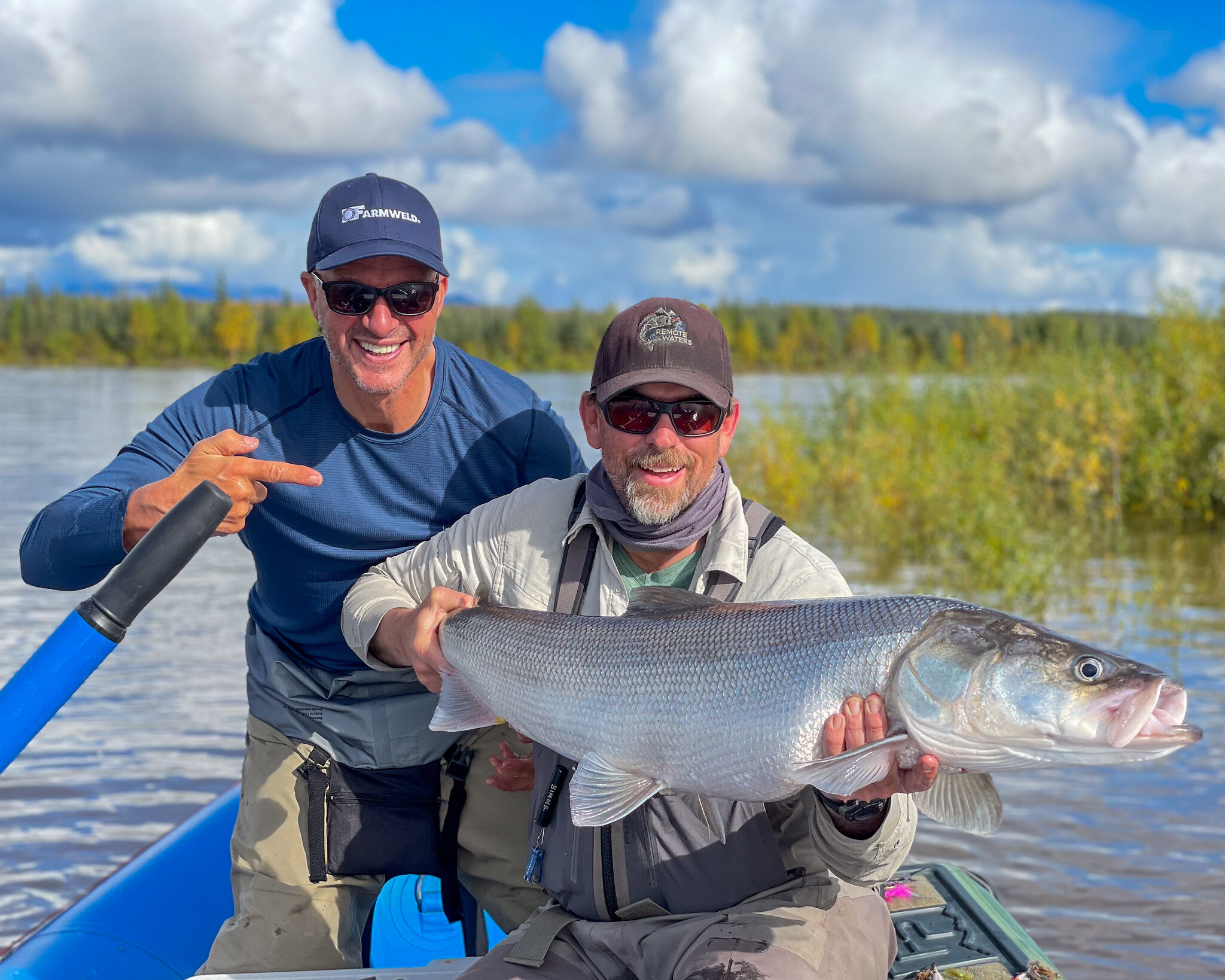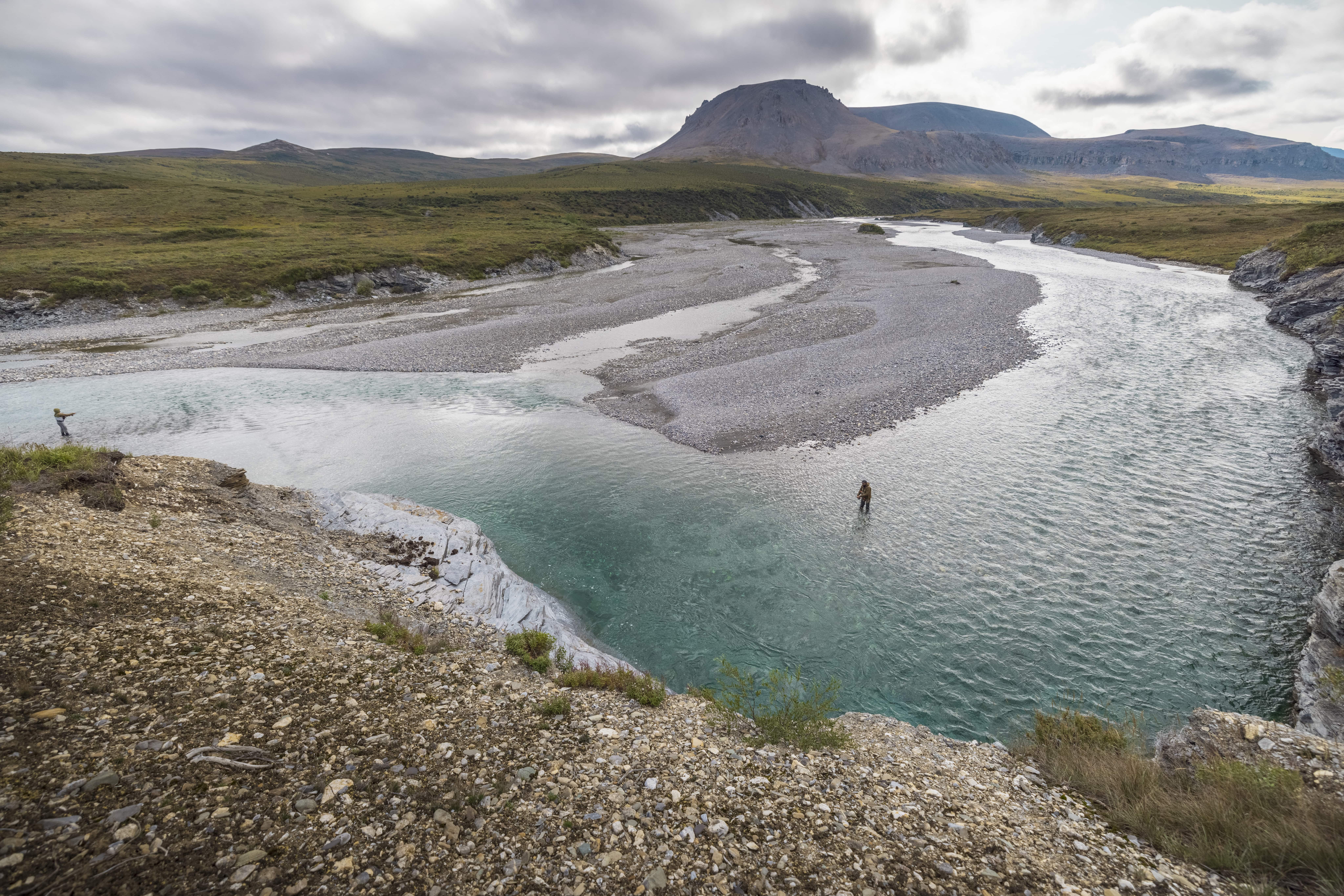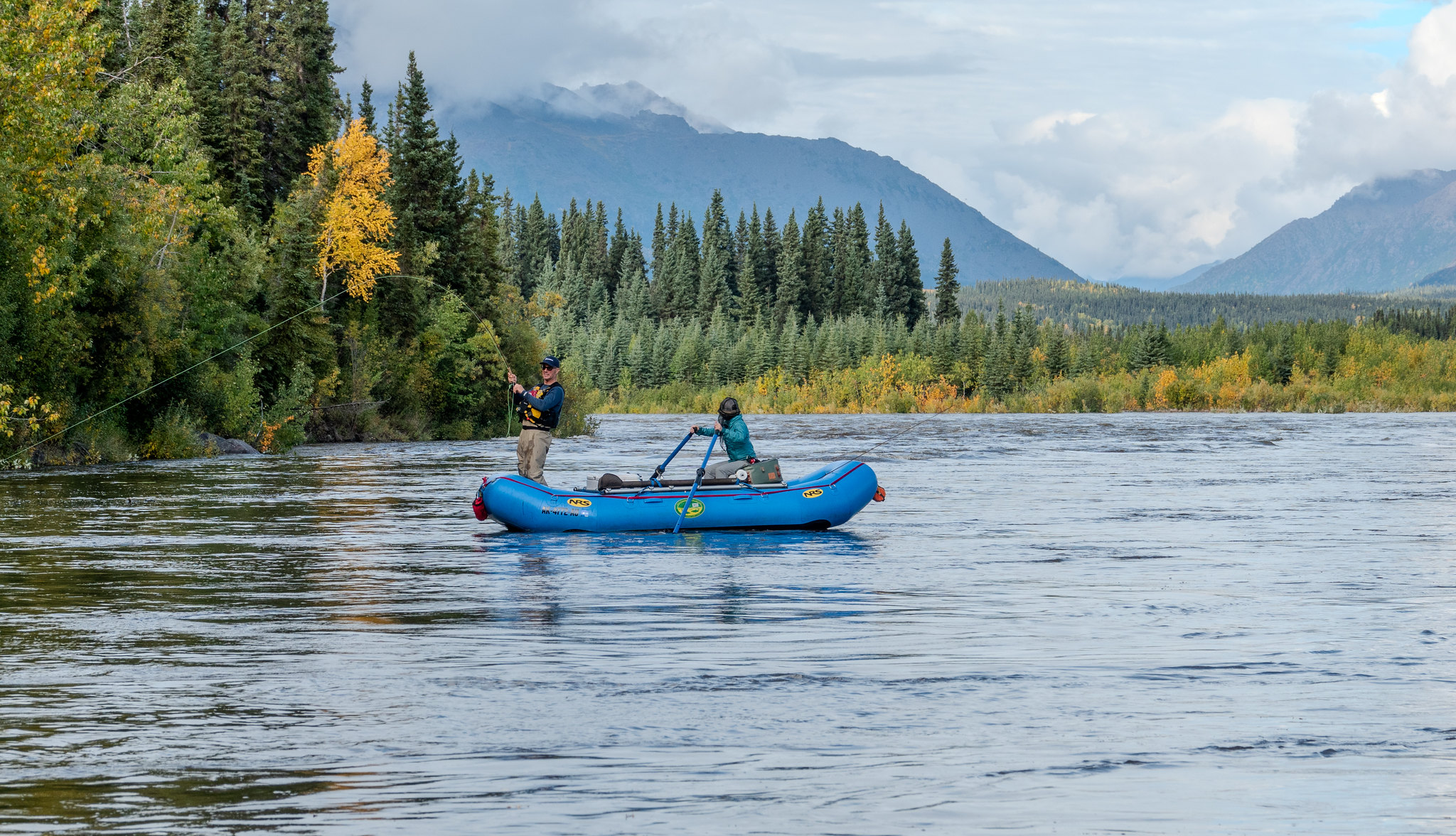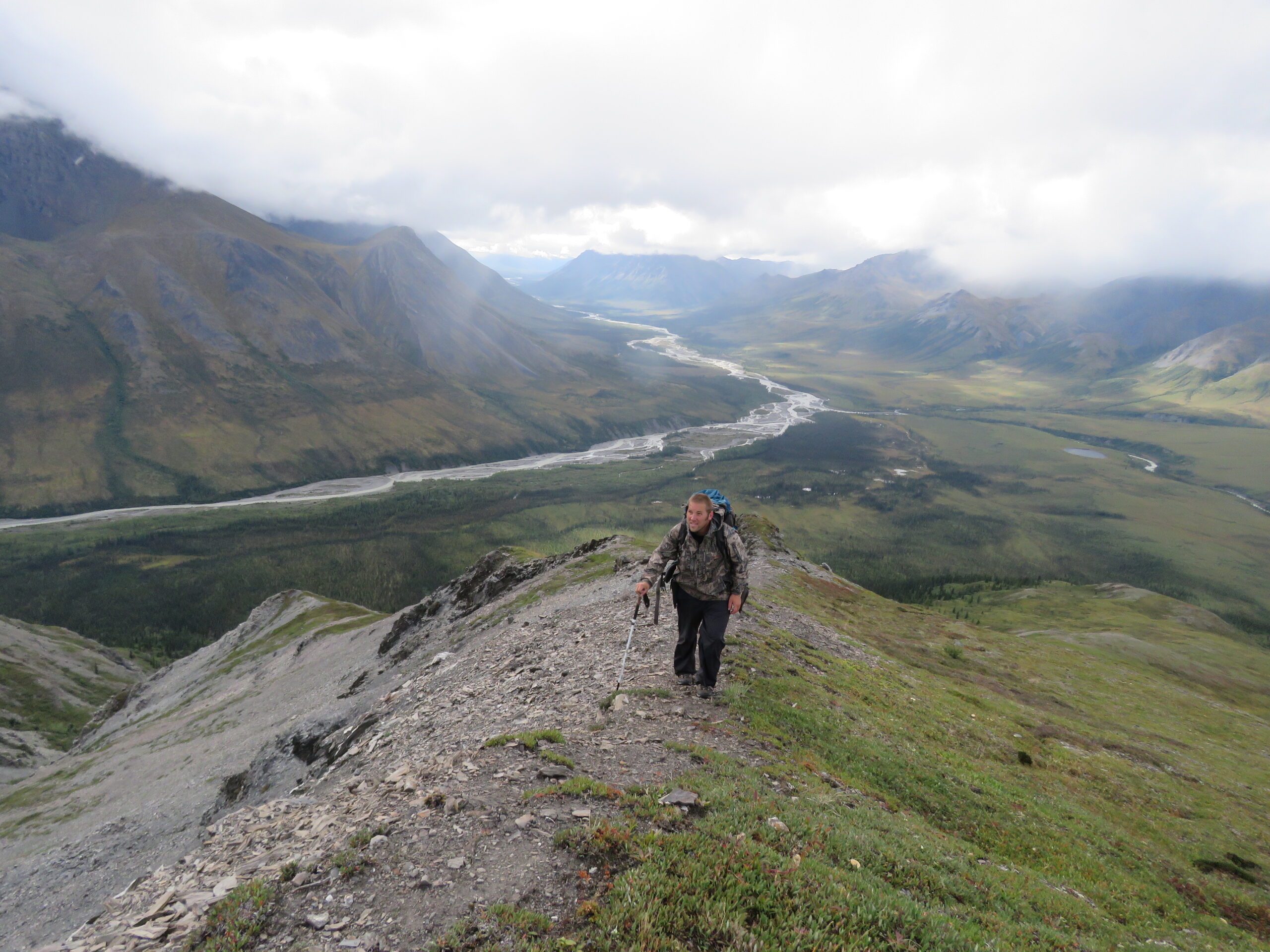Q&A: Greg Halbach
The Brooks Range flyfishing and river guide shares how the Kobuk River changed his career and why he questions the Ambler Road project, particularly when it comes to the potential impact on fish populations

Greg Halbach lives in Anchorage, Alaska, and is the owner of flyfishing guide company Remote Waters, which offers wilderness float trips targeting sheefish and other species in the Brooks Range. He had already explored a lot of the best fishing opportunities in Alaska before he made his first solo float down the Kobuk River in 2018. There, he learned that the pursuit of the near-mythical sheefish with a fly rod was not only worth it, but that he wanted to be guiding in the Brooks Range from then on.
Halbach is a staunch opponent of the proposed Ambler Road. He questions the project on many levels, but what concerns him most is the likely negative effects it would have on fish populations and the wild character of the Brooks Range.
Here is his story.
What do you love most about the Brooks Range?
There are so many great things about having the opportunity to guide float trips on rivers in the Brooks Range. These rivers are beautiful, wild, and there are few other places like them in the world. The remoteness of the region is certainly one of the most appealing parts about my job up there. It’s always a little bit of a letdown to get out into the wilderness and then run into more people than you expect – it can start to feel a little crowded. That’s never been an issue on the Kobuk. We rarely run into anyone on the river, and when we do, it’s mostly locals running the river to their fish camps.
What sort of trips do you offer in the Brooks Range?
I offer guided float trips on the Kobuk River and on the Ivishak River in the Brooks Range. My trips are fully guided, 7- to 10-day trips built around some of the best flyfishing that Arctic Alaska has to offer. Each trip is tailored to the group, and there are great opportunities for photography, bird watching, and wildlife viewing, too. On the Ivishak, the options for getting out of the boats and exploring on foot are virtually limitless.
Are there particular species of fish, wildlife, or plants that are especially important to you?
On the Kobuk River, sheefish are the focus of my trips. They are a really unique fish – the largest species of whitefish in the world. The Kobuk has the best run, both in terms of numbers and size of fish. Especially for fly anglers, sheefish represent an opportunity beyond the standard trout or salmon or char routine found across much of Alaska. Even for me, it still kind of blows my mind when a client in a river way up in the Arctic hooks a huge anadromous fish that looks an awful lot like a tarpon. I think that’s what keeps me coming back as much as anything else.
What makes the Brooks Range so special or unique? Why should people in the Lower 48 care about the future of this region?
If we look at some of the most successful conservation efforts over the last century, one of the most important factors that determines which way the pendulum swings is whether or not there is a critical mass of people who care about the issue or the place. Up here in Alaska, Bristol Bay is a great example of this. The battle to preserve Bristol Bay hasn’t been waged just by people living in the Bristol Bay region, or even in Alaska. If that had been the case, that battle likely would have been lost long ago. What helped turn the tide was people from all over the country getting behind the idea that Bristol Bay is too fragile and too important as an ecosystem to put at risk with the Pebble Mine. Hunters and anglers throughout the country slapped “No Pebble Mine” bumper stickers on their vehicles and added their voices to the mix. Some have never been anywhere near Bristol Bay.
The challenge the Brooks Range faces is that because it is so remote and sparsely settled, the voice of opposition coming out of the region just isn’t loud enough. We need hunters and anglers from all over the country to voice their opposition to the Ambler Road. The area that the road would traverse is every bit as fragile as anywhere in Bristol Bay. It’s home to some of the last large and intact sub-Arctic and Arctic wilderness in North America.
What do you think most people would be surprised to know about the Brooks Range?
Where it is! When I talk with people about fishing the Kobuk, I’ll usually show them a map to orient them a bit. Virtually every time, their eyes go wide and they say something along the lines of, “Oh, it’s WAY up there!”
I think once they realize how far away it is, people get some sense of how remote and difficult to access so much of the region is. But I don’t think they have a real sense of how fragile it is. It can seem so big and remote that it’s easy to think it’s kind of untouchable. The reality couldn’t be further from the truth. The harshness of the climate means that scars inflicted on the land heal incredibly slowly – if at all.
What’s one piece of essential gear you’d recommend—or a piece of advice you’d share—with someone planning their first wilderness trip in the Brooks?
Leave as many devices behind as possible. It’s pretty hard to abandon them in our day-to-day modern lives, but they are much less essential once you get out into the wilderness. Definitely take what you need to be safe out there, but every look at a screen pulls you away from experiencing the incredible place you’ve traveled so far to reach.
Is there a part of the Brooks Range that you haven’t had the chance to explore but would like to? Where would you go and what would you do?
Ha, most of it! I branched out onto the North Slope for the first time last year, when I took a group down the Ivishak River in search of big char. I’m itching to get back on the North Slope; it is such an incredible landscape with huge mountain valleys opening out onto an expanse of coastal plain. I’ve also had my eye on the Marsh Fork of the Canning River for a few years. Hopefully, I’ll be able to make a trip down it sooner than later.
What’s your favorite memory from all your time hunting or fishing in the Brooks Range?
One of my favorite memories comes from the Kobuk River. I was guiding a group of two. We had been on the river for six days and it had been raining non-stop the entire time. The river had blown out and fish were nowhere to be found. It felt like we were floating on the Mississippi.
On the afternoon of day seven, we reached the Pah River and the sun came out. We tied the boats off to some alders, stripped off our rain gear for the first time in days, and stretched out to soak up the sun. An hour later, we pushed off, rounded the first bend below the Pah, and floated right into a huge group of sheefish holding in an eddy. The next hour and a half were the best fishing I’ve ever seen on the Kobuk. Fish on almost every cast, the sun shining, and smiles so big they hurt. One of the best trips I’ve ever run.
What concerns you the most about the proposed Ambler Road and/or the associated mines?
There is no shortage of data on the impacts of roads and industrial development. Regardless of how well projects are designed, constructed, and maintained, their footprint extends beyond the immediate surroundings of the developed area. In the case of the region that the Ambler Road would be built through, that footprint would represent the introduction of something completely new into a fragile landscape.
The potential for negative impacts to fish populations in the Kobuk River – particularly the upper part of the watershed, where sheefish spawn – are a major worry. There are countless examples throughout the Lower 48 where degraded water quality associated with silt and runoff from roadways and mining operations have had significant adverse impacts on native fish populations. I suspect you’d have to look long and hard to find instances where roads and industrial development resulted in improved water quality and healthier fish populations.
How might you be impacted if the proposed Ambler Road were built?
A big part of what I offer on my trips is an opportunity for my clients to immerse themselves in a landscape that is wild and remote in a way that very few places still are. Roads are the very opposite of remote and wild.
A single road can fragment habitat, disrupt wildlife migrations, and introduce chemical pollutants on a scale much wider than the narrow strip of gravel that we see. A float down the Kobuk River that might include floating under a bridge and listening to the hammering of engine breaks from tractor-trailers would be a radically different experience.
What’s the biggest misconception you’ve heard about the proposed Ambler Road?
The biggest misconception I’ve heard about the Ambler Project is that it makes any economic sense. This isn’t about halting all industrial development and road building throughout the state. We live in a world with 8 billion people, and we do need resources that extractive industries provide. There’s no reasonable argument against that. But not every project makes sense.
This is a project where the State of Alaska would be subsidizing the development goals of foreign mining companies, while also exposing one of our most fragile and unique ecosystems to significant environmental risk. It seems like a no-win situation from the Alaska side of things.
Header Image: PHOTO: Remote Waters
Take Action for the Brooks Range
Help ensure the Bureau of Land Management maintains the unique values of this iconic landscape by denying the right-of-way for the proposed Ambler Road.
Sign the Petition


